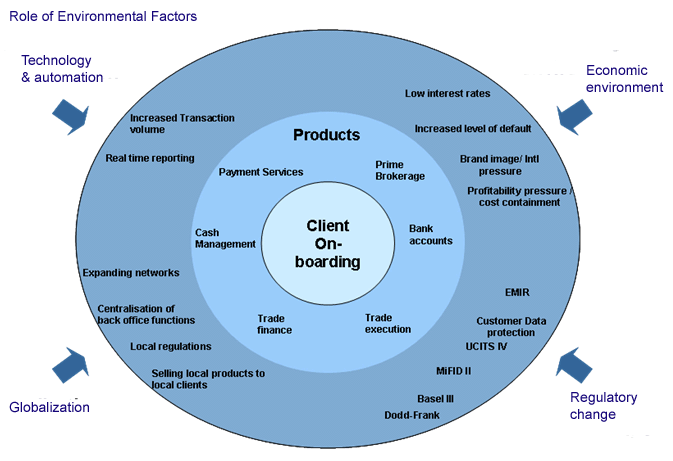Institutional Client On-Boarding in the Financial Industry
Time to Move to the Industrialization Phase
Abstract
The customer on-boarding process for financial institutions is a vital element in the maintenance of high service standards. In an increasingly sophisticated environment, financial institutions have to ensure that they leverage the opportunity generated by automation of the on-boarding process to serve the needs of their clients across the entire firm, thereby maximizing the revenue generation from each client.
In a new report, Institutional Client On-Boarding in the Financial Industry: Time to Move to the Industrialization Phase, Celent discusses how client on-boarding automation is fast becoming essential. The current market environment has put a lot of pressure on firms to become more efficient and derive maximum synergies from their internal operations. Using on-boarding automation is an important tool in this process. One of the reasons for this development is that firms have become too large, having a wide variety of units, products, and geographies to cover. Using manual processes to capture vital client information creates a high level of duplication and makes the firm incapable of capturing all the key information about any client in one place or on a single dashboard. When a firm takes up to three to four months to get the on-boarding completed and the requisite information for a client available across the firm, it leads to a loss of revenue-generating possibilities because the early period of client automation is also the most important in terms of cross-selling.
A number of factors affect the sophistication of the on-boarding process. These include the current technology available, the level of regulation involved, the economic environment, and the global presence of firms and their clients. Payment services, cash management, prime brokerage, and trade execution are examples of products that have more complex on-boarding processes.

“An automated on-boarding platform can greatly shorten the process time, allowing revenues to flow faster,” says Axel Pierron, Celent Senior Vice President and coauthor of the report. “It improves the dollar value of each client by increasing the cross-sell ratio and reduces both operational cost and risk.”
“The scale of operations of financial institutions today is much more extensive than before,” says Anshuman Jaswal, Celent Senior Analyst and coauthor of the report. “A uniform service standard created through automation would provide clients with equal access to all products and services across the globe, and would enable institutions to analyze and manage their needs and interactions efficiently.”
In this report, Celent discusses how to improve the client on-boarding experience. We begin with an overview of the stages of the on-boarding process and a discussion of the complexity of customer on-boarding for different products. This is followed by an analysis of the benefits of automation of the process. There is also a discussion of the various issues that can arise during on-boarding, which is followed by a section on the possible strategies firms can employ to ensure they can operate a smooth, efficient, and uniform process across different product lines and geographies.
This 22-page report contains 9 figures and one table.

